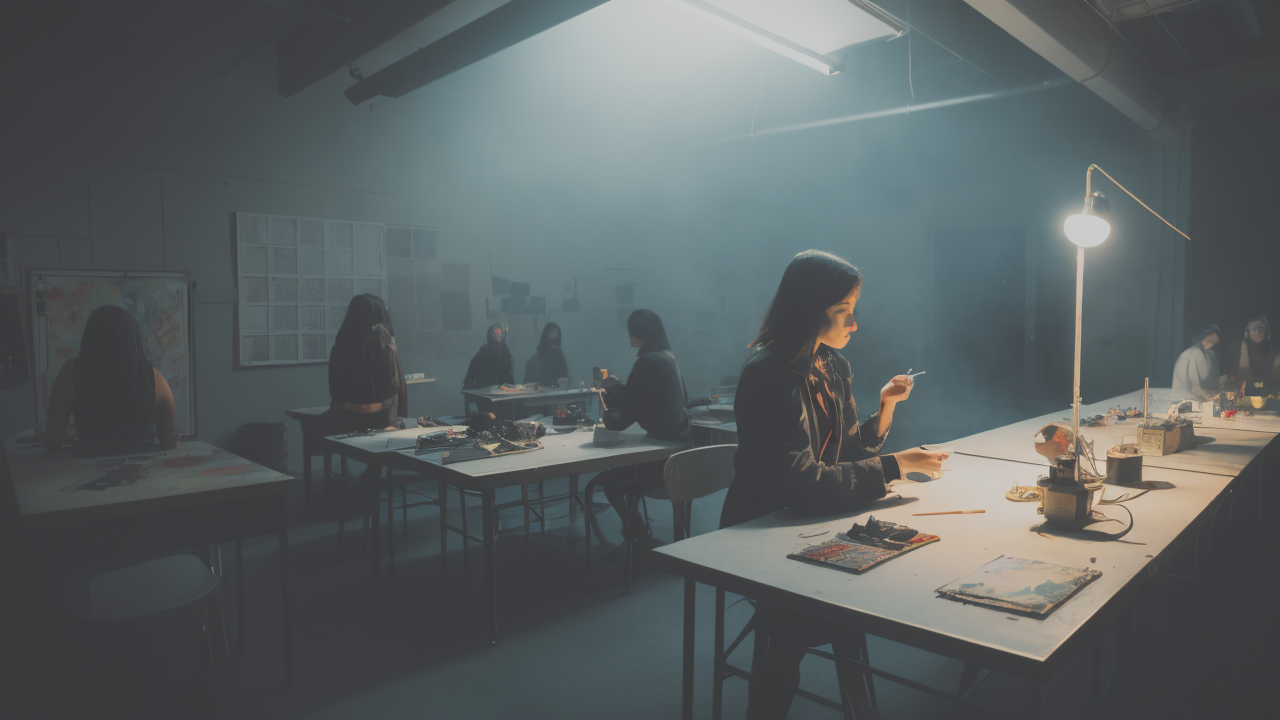
The Art of Nawabi: Exploring Minimalist Wall Art Techniques in the United States
The History and Resurgence of SS195 Textiles
Understanding the Historical Significance of SS195
SS195 is a unique textile technique that emerged in the late 19th century. It was created to make intricate textures in fabrics. The method uses special looms to weave complex patterns. These patterns often took inspiration from nature. They featured delicate floral designs and geometric shapes.

In its early days, SS195 was popular in high-end fashion and home decor. People loved the beautiful textures it created. These textures were known for their durability too. However, as mass production grew, SS195 became less common. It was seen as too slow and expensive for modern factories.
Despite this decline, SS195 left a lasting mark on textile art. Its techniques influenced many other forms of weaving. Today, it's viewed as an important part of textile history. Many museums have collections that show off SS195 works.
The Rise of Nostalgia in Modern Art
In recent years, there's been a growing interest in old art techniques. This trend is partly driven by nostalgia. Many people want authentic, handmade items in our digital world. This has led to a new appreciation for methods like SS195.
Artists are rediscovering the unique textures SS195 can create. They're mixing these old techniques with modern ideas. This blend of old and new is creating exciting new art forms. It's letting artists explore texture in fresh ways.
Social media has also played a role in this trend. Platforms like Instagram show off the beauty of handmade items. This has sparked interest in learning traditional crafts. Many people are taking up weaving and other textile arts as hobbies.
Case Study: Artists Reviving SS195 Techniques
Several modern artists are bringing new life to SS195. One example is Lisa Wong, a textile artist based in New York. Wong uses traditional SS195 looms to create large abstract pieces. Her work mixes intricate SS195 textures with bold, modern colors.
Another artist, Jack Smith, combines SS195 with digital art. He scans SS195 textile samples and changes them with computer software. This creates a unique mix of old craft and new technology. Smith's work has gained attention for its new approach to texture.
In Europe, the group 'Textile Revival' is exploring SS195 in new ways. They're using the technique to create eco-friendly fashion pieces. Their work shows how old methods can address modern concerns.
Integrating SS195 Into Digital Art Platforms
The Technical Challenges and Solutions
Bringing SS195 into the digital world has challenges. The complex textures of SS195 are hard to copy digitally. Artists and tech experts have had to find creative solutions.

One approach uses very detailed scanning. This captures the fine details of SS195 textures. The scans can then be used in digital artwork. Another solution is special software. These programs copy the SS195 weaving process. They let artists create digital textures from scratch.
3D modeling is also being used to recreate SS195 textures. This allows for virtual fabrics that look like real textiles. As technology improves, we can expect even more realistic digital SS195 textures.
The Role of Digital Tools in Preserving Traditional Techniques
Digital tools are very important in preserving SS195. They let artists experiment without physical looms. This makes SS195 more accessible to many artists.
Digital archives are being made to record SS195 patterns. These are valuable resources for artists and researchers. They ensure that knowledge of SS195 is saved for future generations.
Virtual reality (VR) is also being used to teach SS195 techniques. VR programs can show the weaving process. This lets students learn without expensive equipment. It's making SS195 education more available worldwide.
How Artists Are Leveraging SS195 for Digital Art
Digital artists are finding new ways to use SS195 in their work. Some create entire virtual galleries of SS195-inspired art. Others use SS195 textures as parts of larger digital pieces.
Augmented reality (AR) is opening up new possibilities. Artists are creating experiences where SS195 textures interact with the real world. This is pushing the limits of textile-inspired digital art.
In gaming, SS195 textures are being used to create rich, detailed environments. This shows how old techniques can improve modern media. It's introducing SS195 to new people who might not see it otherwise.
Future Perspectives: The Impact of SS195 on Contemporary Art
Predicting Trends in Artistic Expression with SS195
As SS195 gains popularity, new trends are emerging. One is the mixing of SS195 with other art forms. We might see SS195-inspired textures in sculpture or buildings.

Interactive art using SS195 is another likely trend. Artists could create installations where viewers can change SS195-like textures. This could lead to new types of art that people can take part in.
There's also potential for SS195 in showing scientific data. Its complex patterns could help represent information in new ways. This shows how old art techniques can find unexpected modern uses.
Educating the Next Generation of Artists on SS195
As interest in SS195 grows, there's a need to teach new artists. Some art schools now offer classes on old textile techniques, including SS195. These often mix hands-on learning with digital tools.
Online resources are playing a big role in SS195 education. Video tutorials and online workshops make these techniques available globally. This ensures that SS195 skills are passed on to future artists.
Community spaces like makerspaces are also important. They provide access to looms and other tools. This lets people try SS195 without spending a lot of money. It's helping to create a new group of SS195 enthusiasts.
The Economic Implications of Reviving Traditional Art Techniques
The revival of SS195 is having economic effects. There's growing demand for handmade products with these textures. This is creating new opportunities for artists and craftspeople.
The use of SS195 in digital art is opening new markets. Digital prints and virtual art pieces inspired by SS195 are selling online. This is helping keep interest in old techniques while creating new income for artists.
SS195 is also influencing the wider design industry. Its textures are inspiring product designs and fashion. This shows how bringing back old techniques can have far-reaching economic effects.


